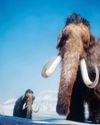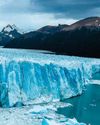Alien Invasion
How It Works
|Issue 114
Venture behind enemy lines on the biodiversity battlefield and weed out the ecological imposters

Aliens are living among us. Humankind cannot escape and we are entirely at their mercy... It may sound like science fiction, but these alien invaders are nothing of the sort. However, they don’t hail from the outer reaches of our universe. In fact, they’re more likely to be found lurking under a rock in your backyard. In biology, an ‘alien’ or invasive species is quite simply one that is thriving somewhere it doesn’t naturally belong.

How these uninvited guests arrive and take hold can happen naturally, or it can be at the hands of us pesky humans. Sometimes the species are transported to their new habitats by mistake, where they hitch a ride on wind or water and get deposited in a new ecosystem. Other times they are introduced by human intervention, perhaps as a solution to another problem without proper knowledge of the species, or as a cute – yet underestimated – novelty that grows into a widespread pest.

As our ancestors began to travel further and further afield, they took plants and animals of all forms along with them for the ride – often unknowingly. In the ocean, larvae of all kinds can be whisked across the planet within ballast water on ships; creatures are transported within goods along trade routes; stowaways in baggage or on clothing can go anywhere in the world just by hopping on a plane with us – the list is endless! But once a species has found an environment in which to thrive, these introductions can have disastrous consequences for populations of native plants and animals.
Dit verhaal komt uit de Issue 114-editie van How It Works.
Abonneer u op Magzter GOLD voor toegang tot duizenden zorgvuldig samengestelde premiumverhalen en meer dan 9000 tijdschriften en kranten.
Bent u al abonnee? Aanmelden
MEER VERHALEN VAN How It Works
How It Works UK
20 WEARABLE HEALTH TRACKERS
Whether you strap a wellness coach to your wrist or weave subtle sensors into your clothes, these devices are revolutionising how we track our health
9 mins
Issue 210
How It Works UK
SUPERPOWERED PLANTS
The world of plants is vibrant and diverse, just like this book.
1 min
Issue 210
How It Works UK
SECRET STORIES OF LOST BEASTS
We're all aware of the mighty dinosaurs that once roamed Earth, but there are so many weird and wonderful species that have been lost to time.
1 min
Issue 210

How It Works UK
ALL ABOUT BLIMPS
Is it a bird? Is it a spaceship? No... it's a non-rigid airship
2 mins
Issue 210
How It Works UK
SUPER QUESTERS MISSION: RAINFOREST MAGIC
Join adventurers Leo, Lilli and Bea as they transform into superheroes and journey to the rainforest in the pursuit of knowledge.
1 min
Issue 210

How It Works UK
HOW THE MIGHTY MAMMOTH RULED THE ICE AGE
Meet the prehistoric giants that roamed the Arctic Circle thousands of years ago
4 mins
Issue 210
How It Works UK
Have they found LIFE ON MARS?
Although it's by no means certain, scientists are slowly accumulating evidence that life once existed on the Red Planet
2 mins
Issue 210

How It Works UK
HOW FAST DO GLACIERS MOVE?
The speed at which a glacier flows depends on its mass, the depth and slope of the underlying rock bed and friction.
1 min
Issue 210

How It Works UK
HOW IN-FLIGHT WI-FI WORKS
This technology allows you to scroll to your heart's content while killing time at cruise altitude
3 mins
Issue 210

How It Works UK
HOW WIGWAMS WERE BUILT
Discover the construction and living conditions inside these traditional domed dwellings
1 mins
Issue 210
Translate
Change font size

